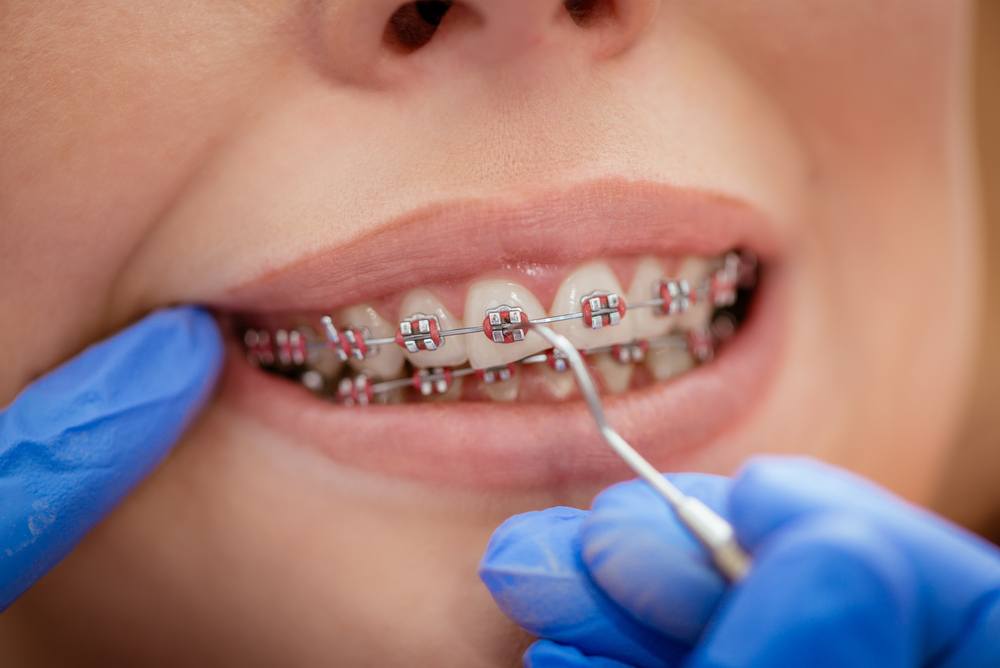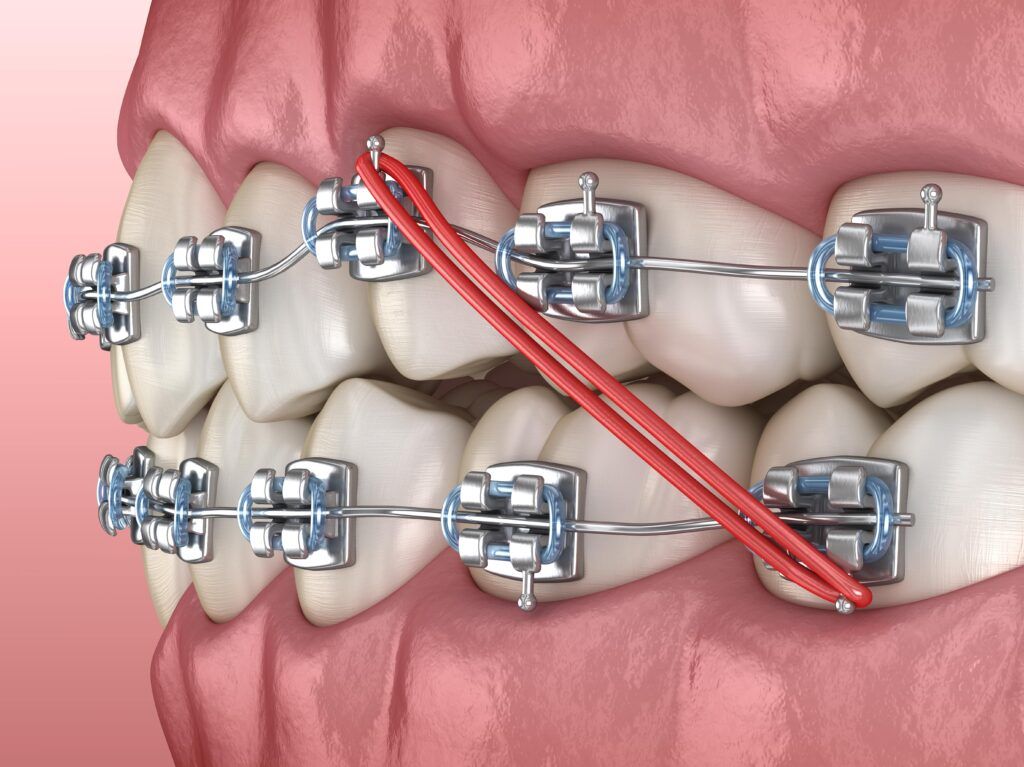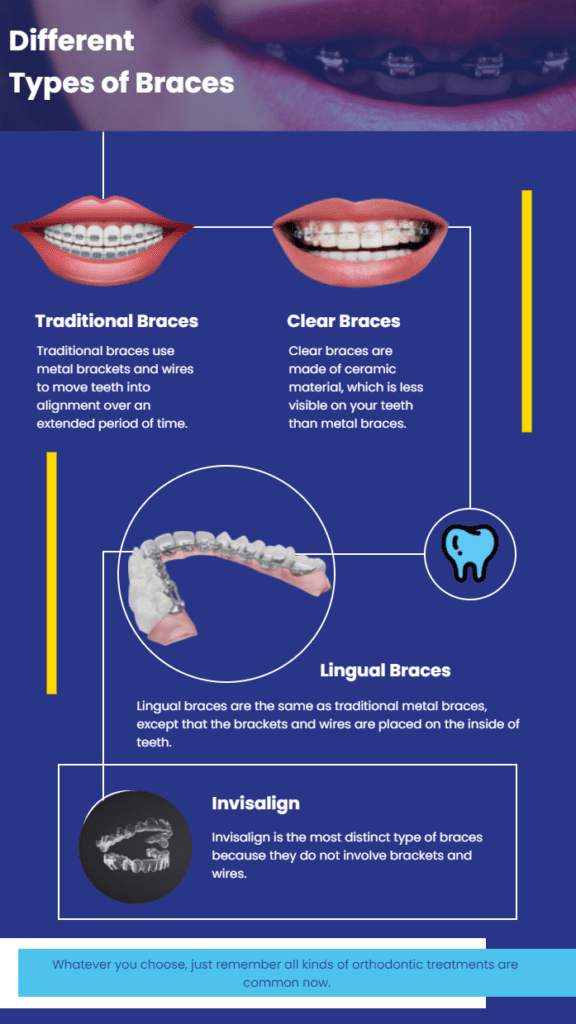What Establishes Cumming Braces and Aligners In Addition To Other Orthodontic Treatments
What Establishes Cumming Braces and Aligners In Addition To Other Orthodontic Treatments
Blog Article
Comprehensive Overview to Orthodontics Treatments for Remedying Dental Misalignments
In the realm of orthodontics, the journey to accomplishing a perfectly lined up smile involves a myriad of treatments customized to deal with dental imbalances. From traditional dental braces to invisible aligners and even medical choices, the area of orthodontics uses a variety of remedies to deal with differing degrees of dental irregularities. Comprehending the ins and outs of each procedure, including their devices, advantages, and potential drawbacks, is vital in making informed decisions about one's orthodontic therapy. As we navigate via the extensive overview to orthodontic treatments for remedying dental imbalances, the intricate information of each method will certainly unravel, losing light on the path towards a unified and functional oral alignment.
Orthodontic Procedures Overview

Normal changes and surveillance are crucial parts of orthodontic treatment to make certain development is on track and to make any type of necessary adjustments along the way. By undergoing orthodontic procedures, individuals can not just attain a straighter smile but also improve their overall dental wellness and feature.
Typical Dental Braces: Exactly How They Work
When thinking about orthodontic treatments for oral imbalances, traditional braces attract attention as a time-tested method for remedying teeth positioning. Standard dental braces contain braces, cords, and bands that work together to use continuous pressure on the teeth, progressively relocating them right into the wanted placement. The brackets are attached to the teeth making use of a special adhesive, and the cords are threaded with the brackets. By adjusting the tension of the wires, orthodontists can manage the direction and force related to each tooth, assisting them right into proper alignment with time.
As pressure is applied to the teeth through the dental braces, the bone bordering the teeth is reshaped to support the brand-new tooth placements. Patients will certainly need routine changes at the orthodontist's workplace to make certain the dental braces continue to use the appropriate stress for reliable teeth movement.
Invisible Aligners: Benefits And Drawbacks
Unnoticeable aligners provide a practical and discreet option to conventional dental braces for remedying dental imbalances. These clear, custom-made trays are virtually unnoticeable when worn, making them an enticing option for people seeking a much more cosmetically pleasing orthodontic treatment. Among the main advantages of unseen aligners is their removability, allowing for much easier maintenance of dental hygiene contrasted to typical braces. People can remove the aligners before consuming or brushing their teeth, decreasing the threat of food getting stuck in the appliance and streamlining the cleansing process.

Surgical Orthodontic Options
Surgical treatments in orthodontics present sensible choices for attending to complicated oral misalignments that may not be efficiently dealt with get redirected here via standard orthodontic therapies. While unnoticeable aligners and typical dental braces can correct many orthodontic concerns, specific situations require surgical treatment to attain ideal results. Surgical orthodontic options are generally recommended for serious malocclusions, substantial jaw discrepancies, and instances where the underlying bone framework requires modification to achieve appropriate alignment.
One usual surgical orthodontic treatment is orthognathic surgical procedure, which entails repositioning the jaws to deal with useful concerns such as problem eating or talking. This surgical treatment is commonly executed in partnership with an orthodontist that helps align the teeth prior to and after the treatment. Surgical orthodontics may also involve procedures to expose affected teeth, eliminate excess gum tissue, or reshape the jawbone to produce a much more harmonious facial account.
Prior to taking into consideration medical orthodontic choices, individuals go through a comprehensive examination to determine the need and possible benefits of such treatments. orthodontist. While surgery may appear complicated, it can significantly improve both the function and aesthetic appeals of the smile in cases where standard orthodontic treatments fail
Retainers and Post-Treatment Care

Post-treatment care entails complying with the orthodontist's directions carefully. This may consist of appropriate dental health practices, attending follow-up visits, and wearing the retainers as recommended. Failing to abide by post-treatment care instructions can cause regression, where the teeth gradually relocate back towards their original positions. Regular retainer wear, great dental hygiene, and routine dental check-ups are necessary for maintaining the website link results achieved with orthodontic surgical treatment and guaranteeing the long-term stability of the fixed dental placement.
Verdict
In final thought, orthodontic treatments provide numerous choices for remedying dental imbalances. Traditional braces use metal brackets and cords to shift teeth right into appropriate placement. Unnoticeable aligners give a more very discreet option but might not appropriate for all situations. Surgical orthodontic options are offered for much more serious imbalances. Retainers are generally used post-treatment to keep the brand-new placement. On the whole, orthodontic treatments can properly improve dental health and visual appearance.
As we browse with the detailed overview to orthodontic procedures for fixing dental misalignments, the elaborate information of each technique will unravel, dropping light on the course toward a unified and useful dental alignment. - cumming orthodontics
One of the most common orthodontic therapies is the use of dental braces, which consist of metal brackets and wires that use gentle stress to slowly change teeth into the preferred position.When taking into consideration orthodontic treatments for oral misalignments, typical braces stand out as a reliable technique for correcting teeth placing. Furthermore, unseen aligners might not be suitable for complex orthodontic concerns that require more considerable teeth activity, as they are normally advised for mild to modest cases. Retainers are personalized orthodontic gadgets developed to hold teeth in their remedied settings after the completion of orthodontic therapy.
Report this page